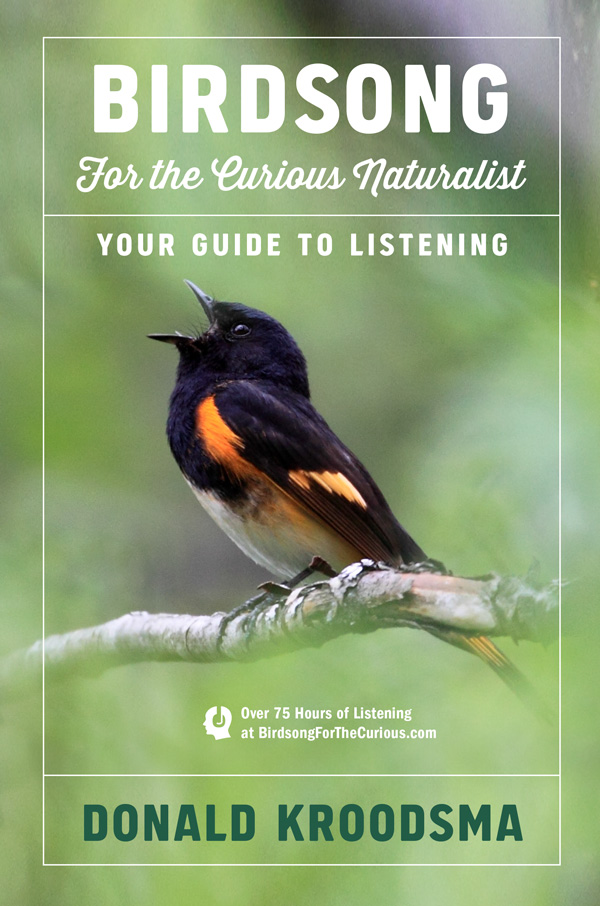30. Dialects in black-capped chickadee songs.
5. More about Song Learning
Song (and call) dialects
From page 65 in the book.
Dialects in black-capped chickadee songs. Everywhere you travel in black-capped chickadee country, listen carefully. Are you in the hey-sweetie dialect region? Be sure to get close enough to your singer so that you can hear that slight waver between the two syllables of the sweetie note (p. 8); if you are too distant, the reverberation from the sweet bouncing off vegetation between you and the singer can obscure that waver. For a special chickadee encounter, experience one of those strikingly different dialects in wester nWashington or Oregon. Or try those odd dialects on East Coast islands, such as Martha's Vineyard or Nantucket. Listen wherever you travel throughout North America and maybe you will discover yet another local dialect, different from the hey-sweeties, such as someone did in Fort Collins, Colorado.
We are going off topic here, but we take listening experiences where we find them: Listen again to the chickadee and the spotted towhee in ♫257. How often do the two males of these two different species overlap their songs? They mostly alternate, don't they, overlapping far less often than if they were ignoring each other? Each bird clearly seems to be trying to avoid the interference of the other. Or it is possible that one bird is the dominant singer, and the second bird inserts his songs into the silent spaces between the songs of the other. If you are numerically inclined, you could collect some numbers to demonstrate the extent to which overlap of songs is avoided. When attuned to how nearby singing males often avoid interference with each other, you will hear this phenomenon more often. Keep listening!
